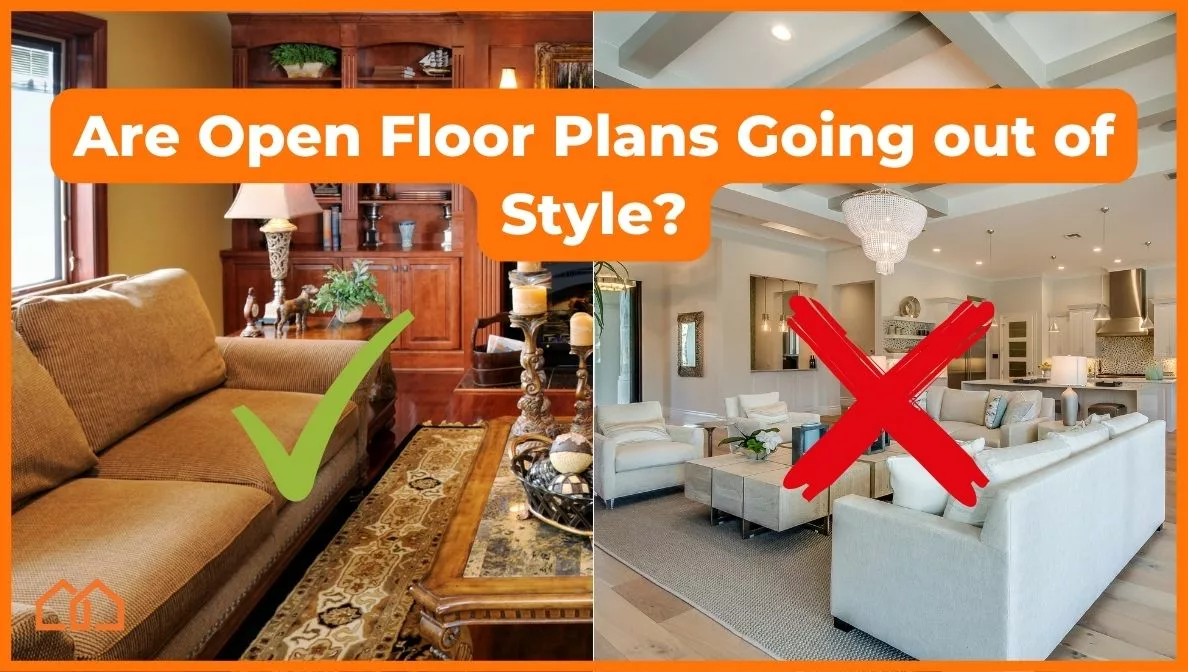Are open floor plans going out of style?
Closed floor plans: For years, they were yesterday’s news. In recent interior design trends, it’s been all about open concept floor plans. But in recent years, there have been reports of buyers looking for more walls. What gives?
Long story short, the pandemic and the rise of remote work have influenced the kind of homes buyers seek. During lockdowns, open spaces granted less privacy and families sought privacy in separate spaces. Even as restrictions eased, the benefits of having separate rooms left its imprint on interior design trends.
As a result, soft versions of closed floor plans have been making their way back into the woodwork. Home designers have seen more requests for dividing walls and offices in building plans. There is also an understandable emphasis on outdoor living.
We can sense the winds of change, but we also want to know—is this change permanent? Or, will building trends revert to the open kitchen and floor plan we are familiar with? We looked up the opinions of experts, so you don’t have to.
Are Closed Floor Plans Making a Comeback?
Yes, to some extent. But open floor plans aren’t out of the equation. After all, architects can’t just ignore the overwhelming benefits of open floor plans, which include freedom of movement, maximizing small spaces and natural light, and allowing creative furniture layouts. Overall, it depends on who you ask whether dividing walls will become the next “hot” home trend.
For instance, more interior designers than ever are promoting separate rooms as a hot design trend for 2024. Formal dining rooms and separate living rooms, which have long been considered outdated, are now coming back too. HGTV also predicts the rise of compartmented spaces like children’s homework spaces and meditation rooms that emphasize quiet concentration and solitude.
Recently, the Architectural Digest affirmed the ongoing need for “hybrid spaces” that offer multiple functions for the same space – another ongoing effect of our days of staying at home. This points to the ongoing need for residents to have separate spaces that can convert to various functions, allowing different household members to use parts of the home for specific purposes. It’s one of the great strengths of closed floor plans, but it can also be applied to some open concept areas.
Are closed floor plans right for you?
In the end, it’s all about what you want. Do you think that a dedicated dining area is convenient, as well as a separate living area where residents can relax away from the main part of the house.? A family room can be a more relaxed living area while a guest room can remain pristine for out-of-town visits. Having private areas with a workspace, whether it’s a home office or garage workshop, can also become part of an advantageous home layout.
No matter whose opinion you read, one thing is certain. Home design will rise to meet consumer demand. As lifestyles change, so will homes adapt. Time will tell if including more walls will stick, or if the modern home builder will revert to the airy, open floor plans that have captured our fancy for years.
The Case for Closed Floor Plans
It’s normal for experts to come to different conclusions even after looking at the same evidence. Realistically, it’s unlikely that the rise of remote work and school post-pandemic has not influenced life at home at all. When voices regarding this trend are mixed, we must consider—what reasons could be behind an overarching closed floor plan shift?
The Need for Definition in Larger Homes
The average home size has more than doubled since the 1950s, and Americans are now expressing challenges about defining spaces in open floor plans. Since the typical home in 2020 was around 2,300 square feet, homeowners found that there weren’t enough room dividers or fancy bookshelves to designate what part of the kit-living-den combo is for what.
Not Wasting Space
Lack of definition leads to another problem: unused space. Whereas a closed floor plan could easily integrate a cozy home office or kid’s playroom, homeowners report wasted opportunities when there are too many options for a space. A great room has a lot of potential, but if there is no spatial definition, there can be wasted square footage.
The Need for Privacy & Quiet
Let’s not forget another factor driving the need for closed floor plans: privacy. In fact, the author of this article also went from an open floor plan to a closed floor plan after the pandemic. The need for more walls and privacy increases as one spends more time around the same people.
When multiple family members must work, learn, and play under the same roof, it is challenging when one must concentrate on a work assignment while another wants to play guitar. Having separate rooms on the same floor resolves this problem. It also helps parents of young children and fur parents put up gates to control traffic flow for safety reasons.
Freedom to Decorate in Closed Floor Plans
Closed floor plans offer another advantage: the freedom to assign unique design concepts to different rooms. While you can make one bathroom “dark and moody,” you can make the office bright and full of plant life or experiment with some bold paint colors.
When there is one open floor plan, homeowners are compelled to unify wall colors and fixtures. For instance, combining the living room with a dining room means requires that these living spaces have a harmonious color palette.
Looking for the Ideal Floor Plan? Ask our Builder Partners!
Just like clothing fashions come in and out of style, floor plans and home design trends cycle as well. If you are looking for a new floor plan that is suitable for your lifestyle, then our builder partners can help you build a dream home with a floor plan that makes sense for your needs. Whether you want an open concept home or plenty of separate spaces, they can make your dream come true. Contact us today to find out more.
Alicia Persson is a Content Strategist SEO writer at Marketplace Homes, utilizing previous years of experience on real estate teams that specialized in investments and property management. Before she joined Marketplace Homes, she was also a freelance writer for 7 years, leading to a specialization in real estate and home living content for boutique digital marketing agencies. During her writing years, she learned the basics of SEO and gained experience writing for many different clients, making her versatile at creating diverse content.
She is a proud University of Virginia master’s graduate and enjoyed her undergraduate years at the University of Mary Washington. When Alicia is not writing, she plays keytar and sings in a local 90’s rock cover band, or she spends time with her amazing family.

